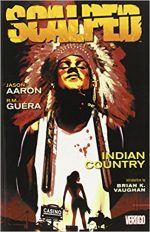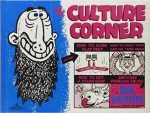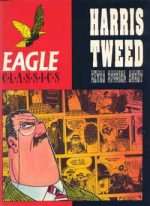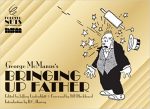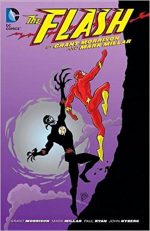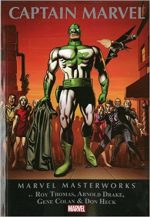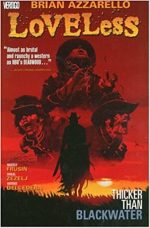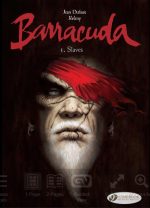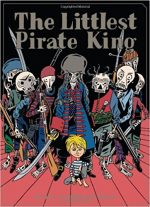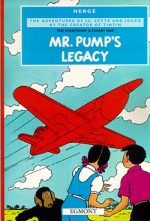

Mr. Pump’s Legacy – Part 1 of THE STRATOSHIP H.22
ISBN 13: 978-0416015522(HB)Â Â Â Â Â Â Â Â Â Â Â Â Â Â Â Â Â Â Â 978-1405212458(PB)
Destination New York – Part 2 of THE STRATOSHIP H.22
ISBN 13: 978-0-4160-1532-4 (HB)Â Â Â Â Â Â Â Â Â Â Â Â Â Â 978-1-4052-1243-4 (PB)
By Hergé, translated by Leslie Lonsdale-Cooper & Michael Turner (Egmont UK)
George Remi, world famous as Hergé, had a long creative connection to Catholicism. At the behest of the Abbot Norbert Wallez, editor of Belgian Catholic newspaper Le XXe Siécle, he had created Tintin before moving on to such strips as the mischievous Quick and Flupke, Tim the Squirrel in the Far West’, ‘The Amiable Mr. Mops’, ‘Tom and Millie’ and ‘Popol Out West’ – all while continuing the globe-trotting adventures of the dauntless boy reporter and his faithful little dog.
In 1935, between working on serialised Tintin epics The Blue Lotus and The Broken Ear, Remi was approached by Father Courtois, director of the French weekly newspaper Coeurs Vaillants. The paper already carried the daily exploits of Hergé’s undisputed star-turn, but Courtois also wanted a strip that would depict solid family values and situations that the seemingly-orphaned and independent boy reporter was never exposed to.
He also presumably wanted something less subversive than the mischievous, trouble-making working-class boy rascals Quick and Flupke…
The proposed feature needed a set of characters that would typify a good, normal family: A working father, a housewife and mother, young boy, a sister, even a pet. Apparently inspired by a toy monkey called Jocko, Hergé devised the family Legrand. Jacques was an engineer, and son Jo and daughter Zette were average kids; bright, brave, honest, smart and yet still playful.
Mother stayed home, cooking and being rather concerned rather a lot. They had a small, feisty monkey for a pet – although I suspect as Jocko was tailless, he might have been a baby chimpanzee, which “As Any Fule Kno†is actually a species of ape.
The first adventure was the two-volume ‘The Secret Ray’ – only once published in English and consequently rarer than Hen’s teeth or monkey feathers. A ripping yarn of scientific bandits, gangsters, mad professors, robots and, regrettably, some rather ethnically unsound incidences of cannibal savages, this is very much a product of its time in too many respects. Although Hergé came to deeply regret (and wherever possible amend) his many early uses of that era’s racial stereotyping, the island dwelling natives in Le “Manitoba†Ne Répond Plus and L’ Éruption Du Karamako (which first ran in Coeurs Vaillants from January 19th 1936 to June 1937) will now always be controversial.
It’s a true pity that such masterful and joyous work has to be viewed with caution, read strictly in context and must be ascribed subtext and values which may never have been intended, merely because the medium is pictorial and its meaning passively acquired rather than textual, and which can therefore only be decoded by the conscious effort of reading.
I also wonder how much was a quiet, sensitive artist led by an aggressively proselytising, missionary Church’s doctrine and policy…
How much Church opposition was there to Mussolini’s invasion of Ethiopia in October 1935 for example? And don’t get me started on Nazi Germany and the Vatican…
Sorry. Rant brakes have been applied now…
Mr. Pump’s Legacy is much less culturally – or commercially – troublesome. When the “American Collar-Stud King†John Archibald Pump dies in a car crash at 155 mph, he probably went surprised but happy.
That’s because he was a septuagenarian millionaire-technocrat and unrepentant speed-fiend (that’s velocity, not pharmacology) and adrenalin junkie. On his remarkably rapid passing he leaves a 10-million dollar prize: an incentive for the first person or persons to fly non-stop between New York and Paris at an average speed of 1000 kilometres per hour.
Accomplishing that modern miracle will secure said cash, but if nobody wins within one year the money will revert to his ne’er-do-well nephews…
The contest captures world imagination in the Age of Speed, and many try for the prize, including S.A.F.C.A., the aeronautical company that Jacques Legrand works for. Very soon both the engineer and his family become the targets of skulduggery and sabotage as his groundbreaking design gradually becomes a beautiful flying machine.
Assaults, poison-pen letters and threats, murder attempts, blackmail and even kidnapping; nothing can impede the project whilst canny Jo and Zette are around to foil them. Even when the completed plane is targeted by an aerial bombardment, the resourceful children have a solution. Starting the plane, they fly away from the bomber, but become lost in the night and clouds…
With their fuel almost exhausted they spot a tiny island in a vast sea and manage to land the plane safely. How can they return the ship in time to win the Prize? Without food, water, fuel or any idea where they are, can they survive long enough to be found?
Combining all-ages thrills and slap-stick comedy with magical art and superb designs, Herg̩ Рa master-creator rapidly reaching the peak of his powers Рproduced in this cliff-hanging volume of adventure a true lost classic, and one worthy of much greater public attention.
A second oversized, fabulously-coloured volume concludes the saga in The Stratoship H.22, starring those capable Legrand children – and their pet monkey Jocko – who saved their father’s revolutionary high-speed plane from a bombing raid by flying it away only to emergency-land it on a tiny desolate island where they are marooned without food or fuel…
The islet is a desolate French Possession, and they discover from its only inhabitant that the next boat isn’t due for five months. Fortuitously, after a terrific storm, fuel drums wash ashore…
Scant weeks remain before the one-year deadline expires on Pump’s $10,000,000 death-bed challenge. Refuelling swiftly, Jo and Zette decide to return to France, even though they aren’t quite sure where it is…
Tragically the plucky youngsters overshoot and after a fearsome voyage, crash in the frozen Arctic where they are taken in by a tribe of Eskimos (yes, we’d call them Inuit now!). Jocko is separated from them and is rescued from an ice-floe by a passing ocean liner. Recognising the famous pet, the ship sends a message and the children are found. A rescue plane is dispatched with spare parts and the super-plane, once again piloted by the children, is returned to France.
With days remaining to make the attempt, the saboteurs step up their efforts to foil the French effort, but as ever childish ingenuity stymies their every dirty trick perpetrated as the super plane is restored to peak efficiency. With one day remaining, Jacques Legrand is finally ready to fly his brainchild into the history books. But when Jo and Zette come to see him off they find him and his crew all drugged into comas. With the deadline hard upon them, who can possibly fly the ship now..?
These beautiful graphic adventures are powerful and evocative fantasies for children, full of daring and accomplishment, and confirming the eternal truth that good kids will always defeat bad adults. If only the real world was as rewarding as these thrilling romps for the young-at-heart of all ages. And if only these superb classics were back in print…
© 1951, 1979, 2007 Editions Casterman, Paris& Tournai. All Rights Reserved.
English text © 1987, 2005, 2007 Egmont UK Limited. All Rights Reserved.

